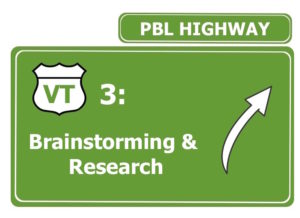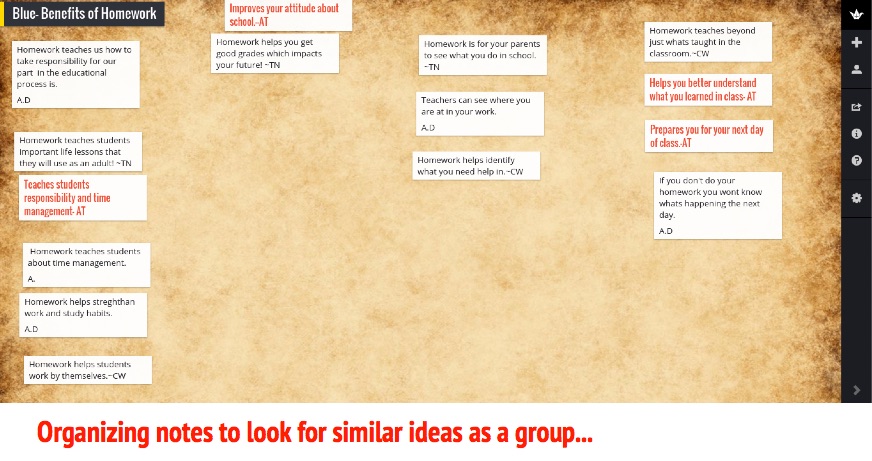 You’ve done an engaging entry event. You have a plan for your PBL unit with a focused driving question. Sweet! Now it’s time for the students to embark on research. But the world of information is a vast wilderness fraught with danger: the danger of misinformation!
You’ve done an engaging entry event. You have a plan for your PBL unit with a focused driving question. Sweet! Now it’s time for the students to embark on research. But the world of information is a vast wilderness fraught with danger: the danger of misinformation!
Before we can research, we need to brainstorm: What do kids want to do about the driving question and about the entry event? What do they want to see happen?
The Brainstorming Phase
Sometimes teachers outline the project details, such as “We are going to create museum displays for our town to tell the important historical stories.” That leaves choice in the project development.
Others say, “What do you think we should about all this trash that is filling up landfills?” leaving the students in charge of the outcome. It all depends on your comfort level, how important a specific project outcome is, and what resources you might have available.
What type of tools can be useful for brainstorming?
You might use padlet to lead a whole class project brainstorm, or good ole’ chart paper. Once you have all the students’ ideas you can categorize them, sort them, or group them in a way that makes sense. Or, take the top 5 and have students vote on which ones they want to work on.

Tiffany Michaels, an educator at Crossett Brook Middle School, uses Padlet to help her students stay organized through the entire research phase.
The Research Phase
Let’s launch! First, provide some supports:
-
- Teach and model note-taking and source-citing. How about some templates for that? Here are ones that work with primary, intermediate, and middle grades students.
- Teach students how to find a good, reputable site.
- Decide what media is okay for students to use (YouTube? Twitter?) and communicate this before research begins.
- Teach students about plagiarism. More than 4 words together written somewhere else? Quote it! Or rephrase.
- Discuss how and why to use images from the Creative Commons
- You might want to consider having students in different roles for research. Some subjects are so big they might need to be broken up into sections for students.
- Find resources at various levels for various learning styles. These can take the shape of infographics, podcasts, books, articles or videos.
How do you know which online sources to trust?
Now’s a great time to have that discussion with your students, as they embark upon their research careers. Here are two 5th grade researchers from Proctor Elementary School, sharing their views on evaluating online resources.
Once research begins:
- Have students fill out a project timeline together, working backwards from the culminating event. Give them a specific time period (say a week or two) for research.
- Check in regularly with teams. Provide focus, guidance and resources.
- Team up with the special educator. He or she can provide supports such as differentiated resources and approaches to help all students.
How do you help students research in PBL and beyond?

Pingback: Culminating Events for Project-Based Learning - Innovation: Education